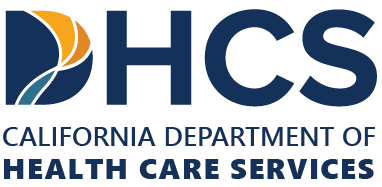
Teen Drug Abuse Facts and Statistics
The goal of this Arizona substance abuse facts and statistics page is to give some perspective on our youth here in Arizona and the prevalence and dangers of alcohol and substance abuse.
If you or someone you love is using substances there is help available. Call Pathway at 877-921-4050
Drug related deaths in the US: 6,100 in 1980… 43,982 in 2013
Arizona has the 12th highest drug overdose mortality rate in the nation (Source: Centers for Disease Control and Prevention, 2014)
In 2013, there were 4,073 DUI-Drug arrests in Arizona, a 99.4% increase in the past decade.
Marijuana Abuse Facts and Statistics
- Regular use of Marijuana by adolescents leads to a lower academic achievement and mental health problems. Early, regular, and long-term use can result in a 6-8 point drop in IQ.
- 17% of those who start using marijuana in their teens become addicted. The addiction rate for daily users jumps to 25-50%.
- It is increasingly potent. Today’s marijuana has an average THC content of 15%, compared to the 4% in the 1990’s. It is being smoked, put in food, candies or beverages and being made even more potent converting it to hash oil (with 60%+ THC)
- Legalization increases availability, especially for youth. 18% of Arizona 12th graders who use marijuana now get it from medical marijuana cardholders.
- Kids are using marijuana at increasing rates. In Colorado, youth ages 12-17 have a 38% higher rate of marijuana use than the national average (11.6% vs. 7.15).
Sources: NIDA; 2014 AZ Youth Survey, 2014 National Survey on Drug Use and Health
- Brain imaging studies of regular marijuana (defined as once per week) users have shown significant changes in brain structure, especially among teens. Abnormalities in the brain’s gray matter- which is associated with intelligence- have been found in 16-19-year-olds.
- California, a national leader in “medical” marijuana use, saw an admission for treatment for marijuana dependence more than doubled over the past decade. Admissions grew from 52 admissions per 100,000 in 1998 to 113 per 100,000 in 2008, an increase of 117%.
- THC alters the ability of the hippocampus, a brain area related to learning and memory, to communicate effectively with other brain regions. In addition, marijuana use that begins during adolescence can lower IQ and impair other measures of mental function in adulthood.
- Driving under the influence of marijuana is similar to driving under the influence of alcohol.
Sources: Krista Lisdahl (brain-imaging and neuropsychological lab at the University of Wisconsin-Milwaukee, California No 1 in marijuana admissions (The Washington Times, Cheryl Wetzstein, NIDA, Liberty Mutual Insurance and Studies Against Destructive Decisions 2013 survey of teens driving under the influence.
- Marijuana is the fastest growing substance being consumed in both the Tempe community and nationally.
Source: The Tempe Coalition
- Some believe marijuana cannot be harmful because it is “natural.” But not all natural plants are good for you- take tobacco, for example.
Source: NIDA director Nora D. Volkow, MD
- Students who smoke marijuana tend to get lower grades and are less likely to complete high school.
Source: National Institute on Drug Abuse (NIDA) 2012
- Adolescents who frequently use marijuana experience difficulties learning, paying attention and processing information.
Source: Jacobus et. Al., 2009
- High School students are more likely to smoke marijuana than cigarettes.
Source: Center for Disease Control and Prevention, National Youth Risk Behavior Survey 2010
- Marijuana smoke contains 50%-70% more carcinogenic hydrocarbons than tobacco smoke.
Source: NIDA 2010
- Adolescents who used marijuana regularly were significantly less likely than their non-using peers to finish high school or obtain a degree. They also had a much higher chance of later developing dependence, using other drugs, and attempting suicide.
Source Silins E, Horwood LJ, Patton GC et al. Young adults sequelae of adolescent cannabis use: an integrative analysis. Lancet Psychiatry. 2014
Alcohol Abuse Facts and Statistics
- The Brain is not fully developed until ages 21-25
- Those who start using alcohol regularly before age 15 have a 40% chance of becoming alcoholics as compared to a 7% chance for those who start regular use at age 21.
- In Tempe, Arizona the average age of first use of alcohol is 21.5 years.
- Alcohol is often the first drug of consumption and may lead to the use of other substances.
- Each year, approximately 5,000 young people die as a result of underage drinking.
- 90% of alcohol consumed by youth is done so in the form of binge drinking.
- Alcohol kills 6.5 times more youth that all other illegal drugs combined.
Source: The Tempe Coalition
- Most young Tempe, Arizona teens obtain alcohol from their home or from the home of a friend. (the Arizona Youth Survey and data gathered from local youth focus group)
Prescription Drug Abuse Facts and Statistics
- In 2013, there were over 1,000 drug-related deaths in Arizona. Over one third involved prescription drugs. (Source: Arizona Department of Health Services, Vital Statistics)
- Arizona ranks 6th highest in the nation for individuals 12+ years misusing and abusing prescription drugs. (Source: National Survey on Drug Use and Health 2-12)
- 7.5% of Arizona high school youth report misusing prescription drugs in the past 30 days- 72.6% of the misuse reported involved prescription pain relievers. (Source: Arizona Youth Survey, 2014)
- More than one third of Arizona’s high school youth who misused prescription drugs also reported drinking alcohol. (Source: Arizona Youth Survey, 2014)
- 13% of Arizona adults report misusing prescription drugs in the past 30 days- almost half (47.5%) of the misuse involved prescription pain relievers. (Source: St. Luke’s Initiative Survey, 2010)
- Hospitalizations and emergency department visits for poisonings (Rx drugs are a leading cause of poisonings) cost Arizona more than $177 million in 2012. (Source: Arizona Department of Heather Services, Vital Statistics)
- From 2010 to 2012, arrest rates for narcotic drug possession have increased 15% in Arizona. (Source: Department of Public Safety, 2013)
- Nationally, 80% of heroin users report that prescription pain relievers was their initiation onto opioid misuse and abuse. (Source: National Institute on Drug Abuse, 2014)
- From 2008 to 2013, almost 3 out of every 1,000 babies born in Arizona were diagnosed with Neonatal Abstinence Syndrome (primarily caused by maternal opiate use). (Source: Arizona Department of Health Services, Vital Statistics)
- Nearly 6,000 people in Arizona have died of drug overdoses since 2008 and more than 40% (2,511) involved prescription drugs. (Source: Arizona Department of Health Services, Vital Statistics)
- Approximately one-third of Arizona youth who have misused prescription drugs in the past 30 days report that their family lacks clear rules about substance use, and about half report they have never talked to their parents about not using drugs or alcohol. (Source: Arizona Youth Survey, 2014)
Approximately one-third of Arizona youth who have misused prescription drugs in the past 30 days report using them to deal with stress or to keep from feeling sad. (Source: Arizona Youth Survey, 2014)





